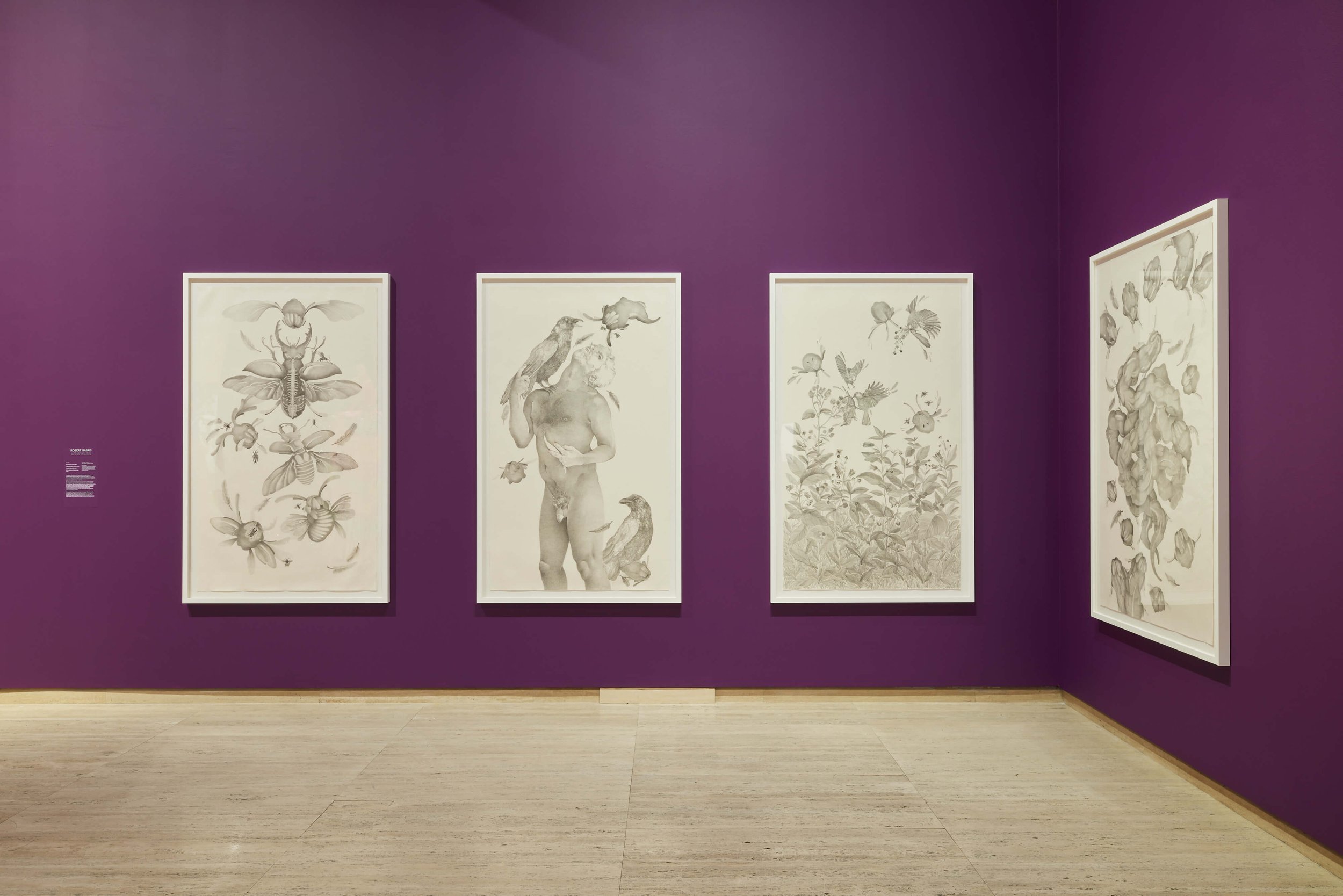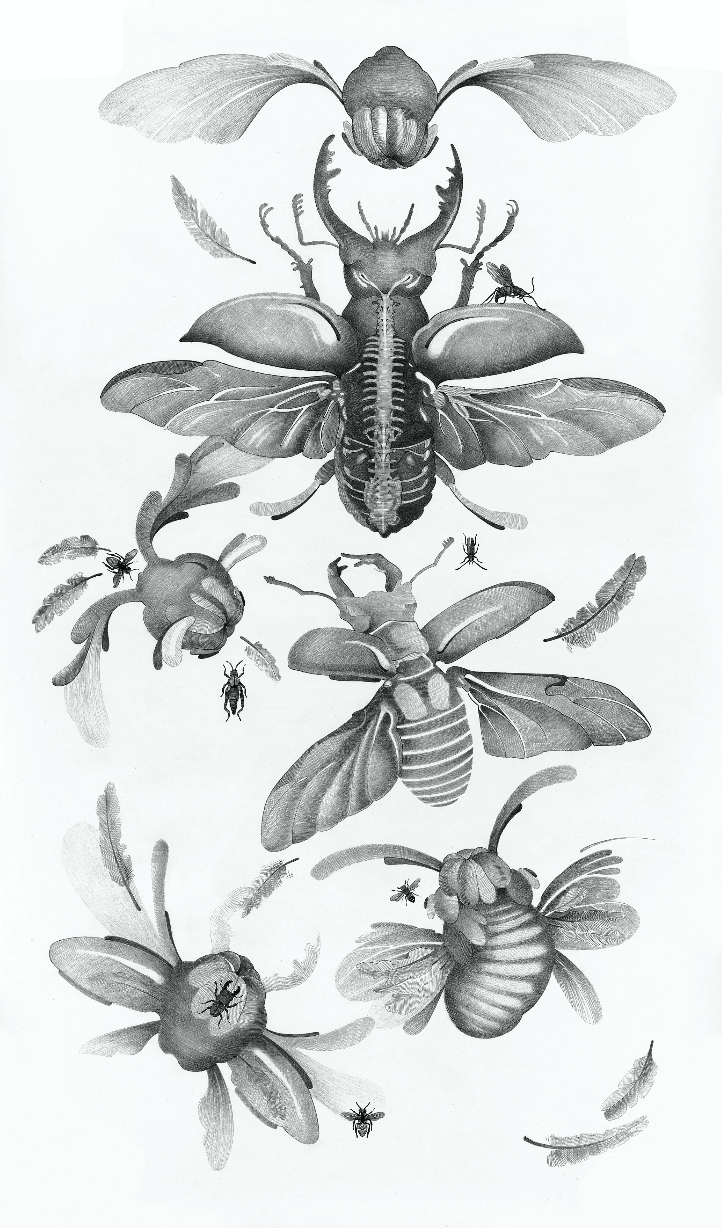Robert Gabris
24th Biennale of Sydney, Australia
9 March – 10 June 2024
The Biennale of Sydney celebrates its 50th anniversary in 2024. The 24th edition, curated by Cosmin Costinaș and Inti Guerrero under the title Ten Thousand Suns, is intended to provide a moment of hope and respite amid the challenges posed by environmental change, global politics and societal change. It will gather artworks from different periods with a focus on the heritage of Australia, First Nation communities and the influence of migration and colonialism. Austria-based artist Robert Gabris has been invited in summer to contribute to the Biennale, for which he is producing a new series of large-scale drawings titled Garden of Catastrophy, a series representing a mix of bodily fragments, internal organs and insects. The work draws inspiration from the exhibition's title, which celebrates diversity in defiance of colonial histories.
We had the opportunity to visit Robert Gabris in his studio and ask him a few questions about the works produced for Sydney.
The new drawings for Sydney are at the same time full of force and incredibly intricate. How long have you spent working on them?
I actually started last year in September 2023. The plan was to produce ten drawings, and for each I would need approximately two weeks. As it turned out I was asked to complete the works by the end of December, so I was only able to deliver four drawings. But I want to continue to do more, at a slower speed and with more time.
How would you describe your work process?
Before I begin with the physical work, I write a concept to be sure. My drawings function as a tool to express my intentions and very complex thoughts. I want them to be understandable, but on a very emotional level. In this case the process was extremely complex, I had a concept but I was not satisfied with the implementation. I destroyed three works by cutting them up and started again. I am a perfectionist, I would never show a piece that I am not happy with.
Do you work in long stretches with little interruption, or in shorter periods with frequent breaks?
I work intensively every day approximately 10 – 14 hours, and every hour I do stretches on my yoga mat, my back is broken. My husband is caring for me, he is always assisting me with things around me, so I can fully focus on my work. Sometimes I forget to eat, he has to remind me. He is a master at cooking soups.
Do you listen to music while you work, or do you prefer silence?
I do listen to different things, but not music. I study postcolonial theory. My favourite podcasts are Rosalux History, Theory and Philosophy by David Guignion, Soziopod, Too Long Didn’t Read, Office of Public Lectures, Der Ostcast from die Zeit, or Trauer und Turnshuh. My favorite authors are James Baldwin, Gayatri Spivak, Frantz Fanon, Toni Morison, Bell Hooks and many more great authors in postcolonial theory.
You mentioned that the Garden of Catastrophy series presents a strong contrast to conventional order and norms. Could you explain this a little more?
The knowledge I draw on is not academic, it is about collective experiences/epistemy from my family and Roma communities. This is what I try to achieve, representing those who weren’t allowed to speak in the past but are now in the contemporary context. My work is very critical towards Eurocentric anthropologic research about otherness and diversity. This is our turn to speak about ourselves. Who cares about Foucault? I want to scream, and stop using white guys to represent us all, it is upsetting and not relevant at all.
What does the imagery of insects stand for in your work? Do different insects hold different meanings?
The existence of insects embodies the struggles and triumphs of Roma communities throughout history. Through their secret ritual of resilience and awakening, these creatures carried forward the torch of decolonial knowledge, whispering stories of strength, unity, and cultural revival to anyone who would listen.
Robert Gabris (born 1986 in Hnúšťa, Slovakia) is an Austrian-based draughtsman, sculptor and performance artist. His work addresses questions of identity and exclusion, often drawing on his own life and experiences as a Roma and queer artist. He has exhibited internationally at documenta 15 (Kassel), Villa Romana (Florence) and Collective by Pure (Shanghai). In 2022 he was awarded the Belvedere Art Award, and a solo exhibition titled This Space Is Too Small For Our Bodies was presented at Belvedere 21 in autumn-winter 2023.
This is Robert Gabris' first collaboration with Phileas.





Images clockwise from top left to bottom:
Robert Gabris, A Moment before You Die, 2023
Robert Gabris, Becoming an Insect, 2023
Robert Gabris, Deadly Nightshade, 2023
Robert Gabris, In the Garden of Catastrophy, 2023








